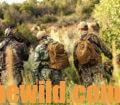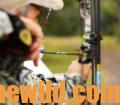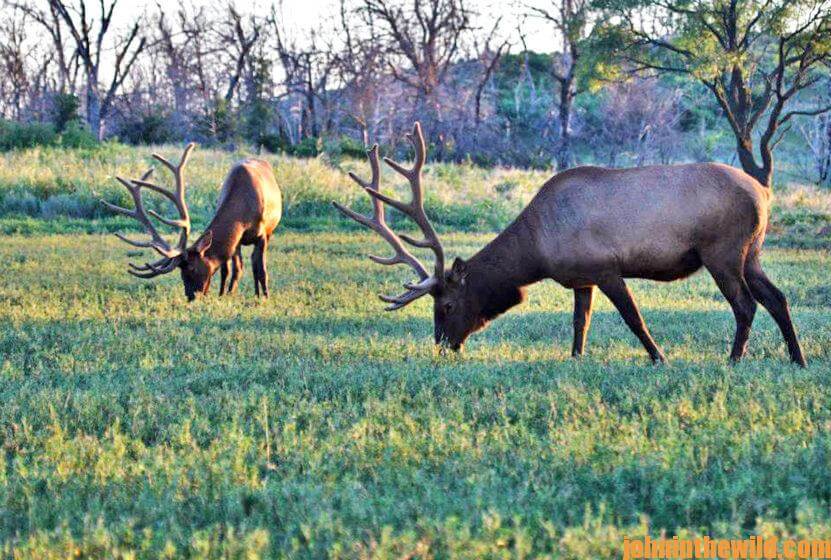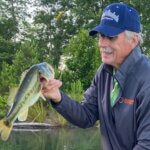Editor’s Note: According to Troy Ruiz, a cameraman and video producer for Primos Hunting (https://www.primos.com/), “We hunt three different states for elk. We hunt New Mexico almost every year, about every second year we hunt a ranch in Montana, and then we have a ranch we hunt in Colorado that’s very, very, very high at 13,200 feet of elevation. It has public land on one side of the property, and private land on the other part of the property. We hunt above the timberline on this particular ranch in Colorado, which during the early season, is when the elk are there. Normally the snow remains on top of the mountain from early spring. Then in September as that snow begins to melt, all that moisture causes the grass to grow early up high. So, we usually hunt this ranch in early September.”
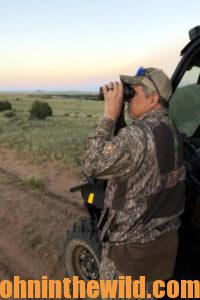 We opted to hunt water holes but it was strange – hunting elk and looking at bighorn sheep walking around in shale rock at that altitude. We also discovered that, besides new grass that grew after the snow melted, there was also a lot of water on top of the ridge – actually some pretty big watering holes up there that held the water when the snow melted. Although the basin on top of the mountain appeared to be very small, when you moved close to it, you could see there were numbers of deep crevices in its bottom. When the basin came down to intersect with the timberline, it flattened out like a dance floor, where the elk danced and mated. There were also springs coming out of the mountain on top. So, the elk had everything they needed: the weather was cool, the water and food were abundant, and there was no hunting pressure. It gave the elk every reason to stay up high once they got to the top of the mountain.
We opted to hunt water holes but it was strange – hunting elk and looking at bighorn sheep walking around in shale rock at that altitude. We also discovered that, besides new grass that grew after the snow melted, there was also a lot of water on top of the ridge – actually some pretty big watering holes up there that held the water when the snow melted. Although the basin on top of the mountain appeared to be very small, when you moved close to it, you could see there were numbers of deep crevices in its bottom. When the basin came down to intersect with the timberline, it flattened out like a dance floor, where the elk danced and mated. There were also springs coming out of the mountain on top. So, the elk had everything they needed: the weather was cool, the water and food were abundant, and there was no hunting pressure. It gave the elk every reason to stay up high once they got to the top of the mountain.
The elk went high in the mountains to get away from hunting pressure and to find more food, especially at the first of September. So, we had to go high to hunt these elk. In fact, we had about a 5,000-foot climb each day that we hunted this property. We would start climbing at daylight because there was no way we were going to get to the top of the mountain before the elk did. We’d have food for an all-day hunt – possibly a two-day hunt – because we knew if we took an elk up there, we’d have a long, hard hike back down to camp.
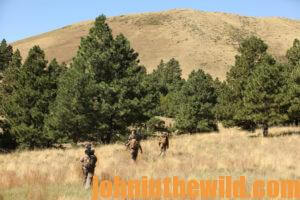 We originally found these high elk because we’d hunted the ranch next to it, and many times while we were hunting this other ranch, we would see the elk go up to the top of the mountain and move through a saddle. The problem was that the top of that ridge was the property line, and the elk would get to the top of the ridge and go over the property line before we could get to them. When that ranch sold, we got to know the new landowner and started hunting with him.
We originally found these high elk because we’d hunted the ranch next to it, and many times while we were hunting this other ranch, we would see the elk go up to the top of the mountain and move through a saddle. The problem was that the top of that ridge was the property line, and the elk would get to the top of the ridge and go over the property line before we could get to them. When that ranch sold, we got to know the new landowner and started hunting with him.
Today we’re able to drive our four-wheelers about halfway up the mountain and then walk the rest of the way. If we had to climb the entire mountain, it’d take us a week to reach the top. We usually leave camp at about 5:00 am and spend about 1-1/2 hours to get to the spot where we leave our ATVs. Then we climb the rest of the way, which requires about an hour’s hike to get up to the place where we can start hunting. We don’t go to the top of the mountain if we have bad weather or bad wind that will cause us to spook the elk before we get close enough to hunt them. The biggest bull we’ve taken up there on this Colorado mountain has scored 360 inches.
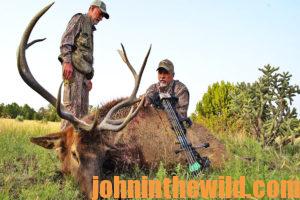
I tell this story about this property to say that if you consistently see elk going to a particular part of the property you hunt, and you have access to where they’re moving, if you’ll make the climb and learn why the elk are going there, you may have an opportunity to hunt elk that haven’t had any hunting pressure – a rare elk in Colorado. You’ll also be hunting him in a place where he wants to be. I’ve found that putting out more effort and spending more time to reach the place where the elk wants to be drastically increases your odds to find and take older-age- class bulls that most hunters never will see.
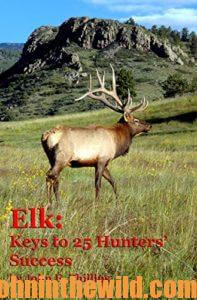 To learn more about hunting elk successfully, check out John E. Phillips’ book, “Elk: Keys to 25 Hunters’ Success,” available in Kindle, print and Audible versions at https://amzn.to/2IDszQk. You may have to copy and paste this click into your browser. (When you click on this book, notice on the left where Amazon allows you to read 10% of the book for free). On the right side of the page and below the offer for a free Audible trial, you can click on Buy the Audible with one click.
To learn more about hunting elk successfully, check out John E. Phillips’ book, “Elk: Keys to 25 Hunters’ Success,” available in Kindle, print and Audible versions at https://amzn.to/2IDszQk. You may have to copy and paste this click into your browser. (When you click on this book, notice on the left where Amazon allows you to read 10% of the book for free). On the right side of the page and below the offer for a free Audible trial, you can click on Buy the Audible with one click.
Tomorrow: How to Take Elk Like Growler

